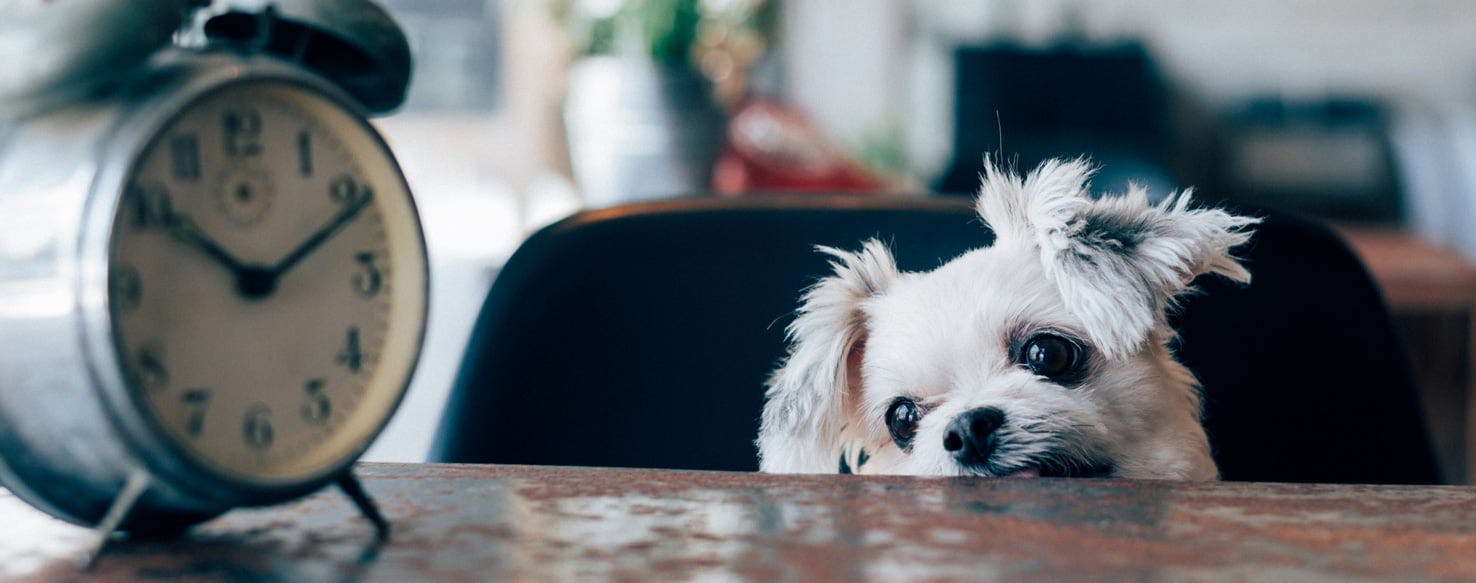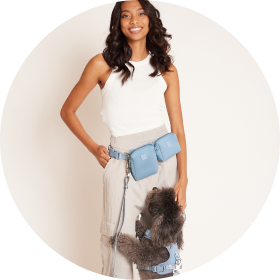- Home
- The Daily Wag!
- Senses
- Can Dogs Tell How Long You've Been Gone?

There's nothing better than the greeting your dog gives you when you come home at the end of a long day. With tail wagging furiously, a huge grin and a complete inability to stand still, your pooch just can't wait to smother you with kisses and hear all about where you've been and what you've been doing. No matter how good (or bad) your day has been up to that point, reuniting with your canine companion makes it a whole lot better.
If you've been on the end of such a memorable greeting, you've probably asked the question, can my dog tell how long I've been gone? Does he know how much time has passed since I walked out the door this morning, and is that part of the reason why he's so deliriously happy to see me?
To find out, we'll have to go digging for answers.
Have you ever seen any of those viral videos that show a soldier returning home from an overseas deployment to be greeted by his family dog? If you haven't, just imagine watching a dog be overcome by pure, unbridled joy and excitement at being reunited with their owner after such a long time. It's heartwarming, tearjerking and a wonderful reminder of why dogs are such wonderful companions.
How does your dog greet you when you get home? Does she bound to the front door to meet you and start jumping all over you before you've even had a chance to put your keys down?
Our furry friends can show us just how glad they are to see us again in many different ways. An enthusiastic greeting is one, while the classic signs of canine happiness (loose and wiggly body, relaxed eyes and a wagging tail) are also reliable indicators. A loving lick, a big cuddle and a desire to follow you from room to room and stay as close as possible complete the picture of a dog that has greatly missed your presence.
However, some dogs can show they've missed you in other, more destructive ways. With boredom and/or anxiety playing a role, these pets might decide to redecorate your living room, chew through your furniture, add a few new holes to your garden, or urinate and defecate throughout the house. All that, and you might have only been gone for an hour!
Body Language
Body language signs that indicate your dog has been waiting for you to return home can include:<br/>
- Alert
- Barking
- Digging
- Listening
- Chewing
- Jumping Up
- Wag Tail
- Pacing
Other Signs
Other signs your dog thinks you've been gone a long time include:<br/>
- An Enthusiastic Greeting
- Excitement And Energy
- Kisses And Cuddles
- Following You Around
- Destructive Behavior
Our furry friends don't have watches, clocks or smartphones, so how are they able to keep track of time, and can they tell how long we've been gone? The amount of scientific data on the topic is surprisingly sparse, but there are some useful studies and theories worth considering.
In 2011, Swedish researchers Therese Rhen and Linda Keeling studied the behavior of dogs before, during and after their owner's absence. The results showed that dogs responded more intensely to their owners (more tail wagging, more attentive and higher energy levels) when they returned after two hours than after half an hour, suggesting that our pets can tell the difference between lengths of time. However, there was no difference in the dogs' responses following absences of two or four hours, raising the question of whether there's a limit on how long dogs can actually track time. The solution to this riddle lies in further research.
Of course, most dog owners can offer plenty of anecdotal evidence of their pet's ability to keep track of time. Not only does your pooch seem to know exactly when you're about to head to work or come home, but she's also quick to voice her complaints if dinner is even a couple of minutes late being served.
While our knowledge of whether dogs can tell the time is far from complete, we do know that all animals have a circadian rhythm, which is basically an internal body clock that roughly follows a 24-hour cycle and responds to light and dark in the animal's environment. It's entirely possible that dogs use this rhythm to keep track of when important events, such as dinner, are due to occur.
Another theory put forward by dog-cognition researcher Alexandra Horowitz in her book Being a Dog is that dogs may actually be able to track time using their noses, using the absence, presence and strength of scents to anticipate when events will occur. For example, perhaps your pooch can tell when you're about to arrive home based on the strength of your scent at the front door.
Does your dog hate being left home alone for any period of time? If so, there are plenty of simple things you can do to help your dog tolerate and even enjoy spending time by herself:
- Leave her alone when you're at home. Being alone doesn't have to be associated with being home alone and with you leaving the house, so you can give your dog treats or a food puzzle to enjoy while you're in another part of the house.
- Start early. Start getting your puppy used to the idea of alone time as soon as you can. Give your pet 30 minutes to an hour of solo time in their crate or play area each day, and then gradually increase this time period as your puppy grows older.
- Treat time. Give your pup a treat or chew to enjoy when you're not at home. You could also provide an interactive food puzzle toy to provide a tasty reward and also help prevent boredom.
- Reduce anxiety. If your puppy gets stressed or anxious whenever you prepare to leave the house, try to reduce the fuss surrounding your leaving. For example, if your dog's anxiety ramps up whenever you pick up your keys or put on a coat, teach her that these cues aren't necessarily associated with you leaving.
If your dog is having serious trouble dealing with separation anxiety when you're gone, consider seeking help from a reputable dog trainer or behaviorist.
Have questions or concerns about your pet?
Chat with a veterinary professional in the Wag! app 24/7.
Get Vet ChatWritten by a Labrador Retriever lover Tim Falk
Veterinary reviewed by:
Published: 02/12/2018, edited: 04/06/2020
More articles by Tim Falk

